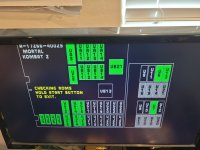GhaleonUnlimited
Enthusiast
I've had this Irken Labs Retro Scaler A1 and have not successfully made a cable to actually use it. I need a custom SCART adapter for consoles but no one seems to make a female SCART to male RGB Db15 (pinout in the link).
I've contacted the big SCART cable makers but haven't had luck on my inquiries on a custom cable (I know they're busy).
Here's the item and pinout: https://irkenlabs.com/scalera1/rgb-and-sync/
Either :
1. Do you know anyone who I could just say "Here's what I need, can you make this cable please?"
Or
2. I will happily mail someone all the parts and wires needed if you could just wire it up for me, and I'll pay your rate for the work!
Idk what I'm doing wrong but I've tried and failed to make it myself, and it'd be really helpful to have this for my setup. It's been really frustrating to not understand what I'm doing wrong, tho I know this should be simple and I repair my own cables.
Irken Labs always gets back to my questions, but isn't sure what the trouble couple be.
Thx!
I've contacted the big SCART cable makers but haven't had luck on my inquiries on a custom cable (I know they're busy).
Here's the item and pinout: https://irkenlabs.com/scalera1/rgb-and-sync/
Either :
1. Do you know anyone who I could just say "Here's what I need, can you make this cable please?"
Or
2. I will happily mail someone all the parts and wires needed if you could just wire it up for me, and I'll pay your rate for the work!
Idk what I'm doing wrong but I've tried and failed to make it myself, and it'd be really helpful to have this for my setup. It's been really frustrating to not understand what I'm doing wrong, tho I know this should be simple and I repair my own cables.
Irken Labs always gets back to my questions, but isn't sure what the trouble couple be.
Thx!

 I thought I recognized your name!
I thought I recognized your name! 
